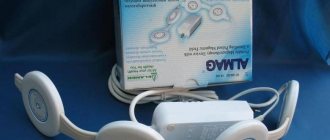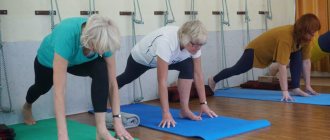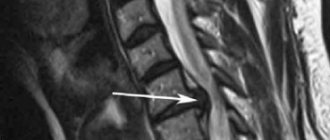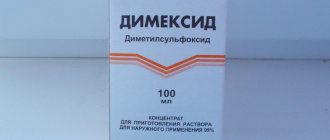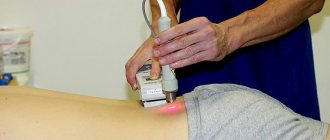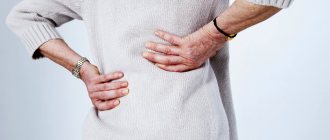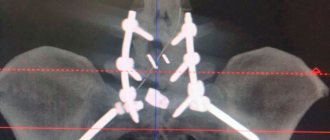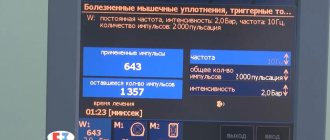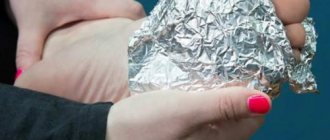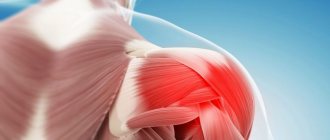Electrophoresis is a popular physiotherapeutic method, during which a drug is injected into the affected area through the action of galvanic current, without damaging the skin. Electrophoresis with novocaine is especially often used for osteochondrosis of the cervical, thoracic and lumbar spine. This procedure helps alleviate pain, eliminate muscle spasms, and stimulate blood microcirculation.
The rehabilitation clinic of the Yusupov Hospital is equipped with modern physiotherapeutic equipment necessary to carry out effective procedures. Experienced physiotherapists monitor the entire treatment process until the patients’ complete recovery.
Electrophoresis with novocaine: rules of execution
The electrophoresis procedure with novocaine is quite simple to perform. It is carried out using two fabric pads with dimensions corresponding to the electrodes. The electrode fits freely inside the gasket and is covered on both sides with fabric.
The novocaine solution is applied to a clean, damp pad at a warm temperature, the medicinal substance is applied to the positive or negative electrode in accordance with the table.
Electrodes with fabric pads are applied to the affected area (on the cervical, thoracic or lumbar region of the spine), maintaining a small distance between them and fixing them with plastic bags filled with sand or cellophane film.
There is another way to perform the procedure that does not involve the use of gaskets.
After applying the medicinal substance and electrodes, the device is turned on. The current must be increased very gradually. The level is selected depending on the patient’s sensations: in the areas where the electrodes are located, he should experience a slight tingling sensation.
Electrophoresis with novocaine should not be accompanied by pain or burning sensations, as this threatens the appearance of a burn on the treated areas.
Electrophoresis procedures are recommended to be carried out daily or every other day. The course usually consists of 10-20 sessions lasting from 10 to 15 minutes.
Is it possible to carry out the procedure at home?
If a compact hardware device is available, then the electrophoresis procedure can be carried out at home. There are no difficulties observed here.
Although the procedure itself is simple, it is not advisable to prescribe medications to yourself or prolong the course of therapy or session. For the first treatment session, it is better to invite a specialist who will correct further independent actions in electrophoresis.
Devices for home use can be purchased at a pharmacy kiosk for medical equipment. This could be Potok-1, MAG-30, “Solnyshko”.
Prices for drugs
Average cost of drugs in Russian pharmacies:
- Eifilin, 10 ampoules of 10 ml – 52 rub.
- Novocaine, 10 ampoules of 0.5%, 5 ml – 34 rub.
- Foradix Magnesium, 250ml bottle – 730 rub.
- Lidaza, 10 ampoules – 280-300 rubles.
- Karipain plus, 1g bottle – 220 rub.
- Hydrocortisone ointment 10g one tube – 35 rubles.
- Humisol injection solution 1 ml – 67-74 rubles.
Treatment of osteochondrosis is carried out not only with the help of electrophoresis, but also with other methods:
- kinesio tapes;
- according to the method of Dr. Bubnovsky;
- using manual therapy;
- according to the method of Dr. Evdokimenko;
- Kuznetsov apparatus;
- leeches;
- Almag-01 device;
- Darsonvalem;
- acupuncture.
Physiotherapeutic electrophoresis together with medications, used to treat cervical osteochondrosis, can also effectively cure many types of diseases and pathological phenomena in the musculoskeletal system.
Electrophoresis with novocaine: indications
Electrophoresis with novocaine is used at the Rehabilitation Center of the Yusupov Hospital for patients with various diseases in almost all medical fields:
- neurological ailments (migraines, neuroses);
- diseases of the cardiovascular system (hypertension);
- ENT diseases;
- pulmonary (bronchitis, pneumonia);
- gynecological (adhesions, erosions;
- urological (inflammatory, adhesive processes);
- in surgery (for burns, postoperative scars);
- dermatological problems;
- dental diseases (inflammation, fluorosis);
- in traumatology and orthopedics.
Due to its absolute safety, electrophoresis with novocaine can be used even by children, including newborns.
Electrophoresis with novocaine: contraindications
Despite its harmlessness, electrophoresis with novocaine is contraindicated in patients with the following diseases and conditions:
- various neoplasms;
- fever or high temperature;
- acute inflammatory processes;
- purulent processes;
- severe bronchial asthma;
- aphasia;
- severe conditions;
- individual intolerance to the procedure (the main active ingredient of the drug);
- acute stages of radicular syndrome;
- tuberculosis;
- tendency to develop bleeding.
It is not recommended to carry out electrophoresis with novocaine if there is damage to the skin at the site of intended exposure.
Electrophoresis with novocaine for osteochondrosis
Electrophoresis with novocaine shows excellent results in the treatment of osteochondrosis.
Osteochondrosis develops when the intervertebral discs lose their elasticity and elasticity, and their subsequent dehydration, which leads to gradual destruction. Osteophytes – bone growths – form at the edges of the discs. Collapsed intervertebral discs lead to changes in the height of the vertebrae, as a result of which the nerve roots located between the vertebrae are pinched, resulting in pain in the patient.
Osteochondrosis develops in specific parts of the spine: the lumbar, cervical, and thoracic spine.
Doctors at the Rehabilitation Center at the Yusupov Hospital select a particular drug for electrophoresis depending on the stage of the disease:
- in the acute stage, electrophoresis is performed with novocaine, baralgin, sodium salicylate, benzohexonium, pentamine;
- in the recovery stage, electrophoresis with sulfur, zinc, nicotinic acid, aminophylline, bischofite, therapeutic mud or mud squeezes is prescribed.
Electrophoresis with novocaine is carried out in cases of exacerbation of cervical and lumbar osteochondrosis, in patients with radicular pain, reduced or absent sensitivity in the area of pain.
When performing electrophoresis, the anode is placed on the collar area or in the area of maximum pain. The cathode is placed symmetrically in the spine area.
A gasket soaked in a solution of novocaine (0.5%) or procaine is placed under the anode. The duration of the procedure itself is from 15 to 30 minutes, depending on the intensity of the pain; in case of severe pain, electrophoresis can be performed twice a day. A course of electrophoresis with novocaine for osteochondrosis consists of 10-20 sessions.
For patients with pronounced pain syndrome outside the exacerbation phase of the disease, disturbances in the circulatory system in the spinal roots, a feeling of numbness, coldness in the legs and feet, specialists at the Yusupov Hospital rehabilitation clinic recommend bipolar electrophoresis with novocaine and nicotinic acid.
This procedure is performed by analogy with the previous one, but using a solution of novocaine (0.5%) for the anode and a solution of nicotinic acid (1%) for the cathode.
Electrophoresis with novocaine (in addition - with analgin, nicotinic acid) can also be used to treat diseases of periarticular tissues:
- bursitis (inflammation of the periarticular mucous membrane, most often in the knee or elbow joint);
- myositis (inflammatory process in the muscles);
- epicondylitis (an inflammatory process that affects the periosteum located on the large protrusions of the long tubular bones of the upper and lower extremities - humerus, radius, elbow, tibia, femur).
High results in the treatment of osteochondrosis at the Rehabilitation Center of the Yusupov Hospital are achieved through the integrated use of electrophoresis with novocaine, drug therapy and massage. The simultaneous provision of local, general and manual effects ensures rapid elimination of pain. This treatment tactic significantly increases the effect of using muscle relaxants.
Advantages and disadvantages
The general advantages of electrophoresis are as follows:
- the drug is administered actively and purposefully, since only those drugs that have an ionic form in solution are selected for electrophoresis, and the drug accumulates under the skin;
- the drug acts for a long time, has a therapeutic effect several days and even weeks after the end of the course;
- the medicine can be administered specifically, that is, paravertebrally or deep into the musculo-ligamentous apparatus of the spine, if we are talking about protrusions and hernias;
- An important point is the almost complete absence of adverse reactions, because the medicine does not pass through the gastrointestinal tract, liver, and does not irritate the gastric mucosa. Quite often, the drugs for electrophoresis that are used for protrusions or hernias will be nicotinic acid and aminophylline, and in the case of electrophoresis there is no need to be afraid of their usual side effects characteristic of oral use;
- electrophoresis differs favorably from injections in the method of drug delivery. After all, if there is a spasm of capillaries in the pathological focus, such as in chronic back pain due to the presence of a protrusion or hernia, then the injection often does not resolve for a long time. And the electric current is guaranteed to deliver medications evenly exactly where they are needed, bypassing the blood;
- electrophoresis helps to bring into the depths of the tissues only the medicine that is necessary: no impurities, ballast substances, which are contained in abundance in tablets, do not enter biological tissues during electrophoresis. In the same way, no associated solvent, without which various injections and intravenous infusions are impossible, is used. Therefore, the body is not loaded with excess fluid, microcirculation is not disrupted, and post-injection infiltrates and complications do not form;
- finally, electrophoresis is a completely painless, bloodless, and atraumatic method of drug administration, which is well tolerated by both adults and children.
Electrophoresis also has disadvantages. The most important of them is that not all drugs are suitable for this method of treatment, since not all of them disintegrate into ions, and having disintegrated, not all remain active in a dissociated state. Medicines that do not dissociate into ions are unsuitable for electrophoresis, that is, electrically neutral molecules. The second drawback is that a small electric current is not capable of creating fairly high concentrations of the drug, and it cannot be increased, otherwise the procedure will turn into an unpleasant and painful procedure. Finally, under the influence of electric current, many drugs change their activity, or even become useless, such as some anticoagulants.
Other drugs for electrophoresis for osteochondrosis
The electrophoresis procedure for osteochondrosis at the Yusupov Hospital is carried out using the following substances:
- aminophylline – an anesthetic that accelerates local blood circulation and improves the nutrition of cartilage tissue;
- magnesium sulfate or urea - which have antispasmodic, sedative, anticonvulsant and diuretic properties. Thanks to the use of urea, swelling is eliminated, its further occurrence is prevented, trophism and transmission of nerve impulses are improved;
- lidase - a preparation containing a special enzyme - hyaluronidase, which increases tissue permeability and facilitates the movement of fluid in the joints, resulting in increased mobility;
- apifor - a drug with bee venom that has anti-inflammatory, local irritant and analgesic effects;
- Shilajit solution is a natural remedy that has a pronounced anti-inflammatory, regenerative and anti-edematous effect. Thanks to this substance, pain is eliminated, tissue regeneration is stimulated, and their functions are normalized;
- Karipain – which has a regenerating effect in damaged intervertebral discs;
- humisol - a preparation with sea medicinal mud that has an anti-inflammatory effect, promotes the activation of regenerative processes in damaged tissues, as well as increasing the nonspecific resistance of the body.
The electrophoresis procedure with novocaine or any other drug prescribed by the attending physician can be performed at affordable prices in the rehabilitation clinic of the Yusupov Hospital. Our highly qualified specialists will select the most effective treatment regimen that will allow you to forget about the disease in a short time and forever.
You can ask all your questions and make an appointment with a doctor by phone or online on the Yusupov Hospital website.
What effect does physiotherapy have?
First of all, physiotherapy can be either an addition to therapy or the main form of treatment. Prescribing physiotherapy for osteochondrosis is necessary to solve certain problems and achieve goals, which include:
- reduction of pain syndrome;
- normalization of metabolic processes;
- improved blood circulation;
- normalization of motor functions;
- providing tissues with the nutrition necessary to activate regenerative properties;
- reduce the amount of medications consumed;
- eliminate the source of inflammation;
- strengthen the patient's immune system.
All these effects are achieved through the action of the properties of transformed forms of energy. Procedures are prescribed taking into account the stage of the disease and the characteristics of its course.
Active treatment is indicated only during periods of remission, and during exacerbation of the disease it is recommended to use methods that are aimed at achieving an analgesic effect.
